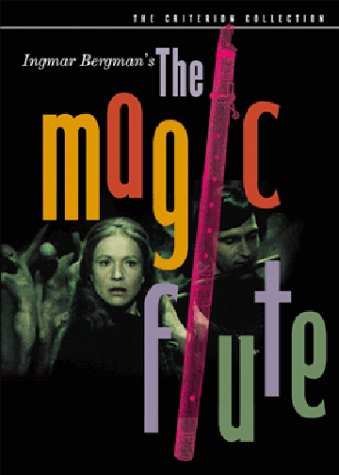A Freemason Opera?
"The Magic Flute" has often been dubbed "The Freemason Opera" by many music critics and scholars. Indeed, even with my very sketchy knowledge about Freemasons, I was able to recognize many Masonic symbols throughout the opera. The use of the number three is very significant. The opera begins and ends on the same three chords, there are Three Ladies and Three Boys, and three doors to the Sun Temple.
One of the obvious reason for this Masonic influence was that Schikaneder (the librettist) and Mozart were Freemasons. Although the Freemasons would eventually dwindle and almost die out due to their lodges being shut down on suspicions of revolutionary activity, in the eighteenth century Freemasons were plentiful. The finest minds of the age joined the Freemasons. Mozart loved the Freemasons and found many kindred spirits who understood his music and supported him in rough financial times.
After Mozart's death there were wild rumors that the Freemasons killed Mozart for divulging their most prized secrets to the public view in "The Magic Flute". This is ridiculous, however, since the Freemasons supported Mozart's widow and children.
Mozart and Schikaneder, through "The Magic Flute", were actually trying to save the Freemasons by demonstrating to the public that the Freemasons (a.k.a. the Sun Priests) held Reason, Truth and Virtue in the highest esteem. This was a vain effort on Mozart's part since the Hapsburg Monarchy eventually dissolved the Freemasons after Mozart's death.
The Magic Flute is a fairy tale and a philosophy. It is an adventure-rescue story and a political commentary. It is an entertainment and an invitation to enlightenment. It is, simply stated, and endlessly fascinating work of art.
The Magic Flute involves the audience at a conceptual and intellectual level, through the teachings of Sarastro and the trials of Tamino, but also at an emotional level through the love pangs and near suicides of Papageno and Papagena.
The Magic Flute is ecumenical and classless. All those who aspire to the brotherhood are welcome. Deep intellectual and conceptual truths are available to the most common of us if we are prepared to apply our patience, courage, and faith.
The Magic Flute is a work inclusive of all the major musical styles of opera in Mozart's day. Effortlessly Mozart combines the coloratura of opera seria in the Queen of the Night, the simple elegance of opera buffa in Pamina and Tamino, simple German song in Papageno, the spiritual and oracular declamations of Sarastro, and even throws in an old German chorale for good measure.
The Magic Flute has been described by Jeremy Noble as an opera with its head high in the clouds and its feet planted firmly on the earth. A "pop" entertainment which becomes sublime. It was an opera designed to entertain the decidedly unroyal audiences in its first run theater, but it also had a profound moral purpose to improve, to inspire, and to enlighten.
|








 View opera MAGIC FLUTE
View opera MAGIC FLUTE
